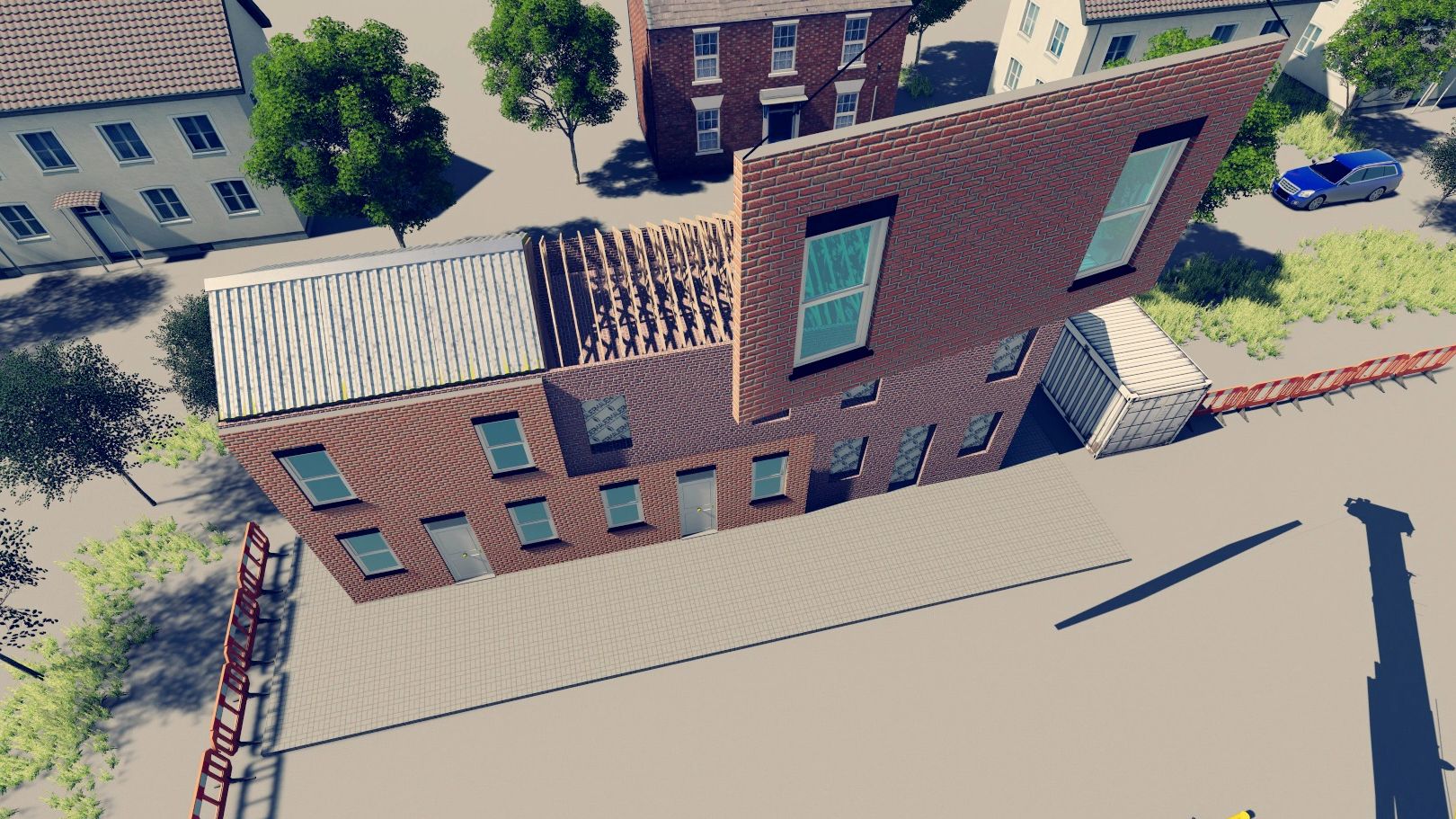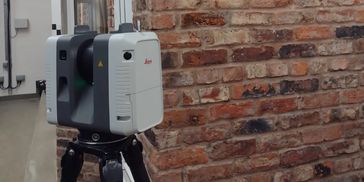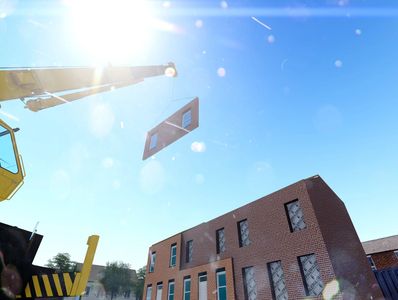
PAS 2035 COMPLIANCE
KEY PAS 2035 ROLES
RETROFIT ASSESSMENT
RETROFIT COORDINATOR & EVALUATOR
RETROFIT COORDINATOR & EVALUATOR
RETROFIT COORDINATOR & EVALUATOR
RETROFIT COORDINATOR & EVALUATOR
RETROFIT COORDINATOR & EVALUATOR

RETROFIT DESIGNER
RETROFIT COORDINATOR & EVALUATOR
RETROFIT DESIGNER
PAS 2035 IN MORE DETAIL
Statutory national targets for the reduction of greenhouse gas emissions in response to the threat of climate change imply that very significant improvements need to be made in the energy efficiency of the UK’s building stock, including nearly all its 27 million domestic buildings.
Whatever the scale of retrofit, a technically sound and usually cost-effective approach is the one known as “fabric first”, which should always be considered when a retrofit plan is formulated. This approach prioritizes improvements in five stages.
- Bring the building fabric into good repair, by dealing with defects that inhibit energy efficiency and compromise improvement measures. Deal with water penetration and damp (and ensure that the building fabric is properly dried out) and with structural defects (cracks, etc.) and poor pointing of masonry.
- Implement “low hanging fruit” measures that are low-cost and easy to install, e.g. energy efficient lighting, basic heating controls, better control settings.
- Improve the building fabric by means of insulation and air-tightness measures, and by minimizing thermal bridging, in order to reduce heat losses and reduce the demand for heat and the required capacity of the heating system.
- Satisfy the remaining heat demand as efficiently as possible using efficient heating technology and responsive controls.
- Use LZC “renewable” energy technologies to reduce emissions further and “top-up” the performance of the dwelling to the target level.
Credit: BSI PAS 2035:2019
For the UK to achieve its ambitious emission reduction targets the domestic model of energy efficiency retrofit that has previously existed must change to a more 'Whole House Retrofit' approach.
For the past years industry leaders have been assessing previous standards of compliance and energy assessment and the implementation of PAS 2035:2019 is a result of this review.
A new focus was required and it is widely acknowledged that this new working standard is a huge leap forward in helping the UK meet these most ambitious targets.
PAS 2035 is different - it splits out responsibilities that have often either been overlooked or have not previously been considered as a specialist requirement.
The result is the creation of the following key roles within the process:
THE RETROFIT ASSESSOR
Dwellings which require energy retrofit work will first need to be assessed by a Retrofit Assessor.
These assessors play an important role in the PAS 2035 process as they collect and provide property data/information which Retrofit Coordinators can use to develop a relevant improvement plan.
Reports produced by the Retrofit Assessor include:
- Energy Performance Assessment
- Condition Survey
- Occupancy Assessment
- Heritage Impact Assessment (Path C)
THE RETROFIT COORDINATOR
In order to comply with PAS 2035 every domestic retrofit project will need to be managed by an approved Retrofit Coordinator.
A Retrofit Coordinator is the individual who will be responsible for overseeing the assessment of dwellings as well as the subsequent specification, monitoring, and evaluation of energy efficiency measures, in accordance with PAS 2035.
A Retrofit Coordinator will manage a retrofit project from inception to completion, and will need to liaise with Clients, Retrofit Assessors, Retrofit Designers and Retrofit Installers in order to ensure effective end-to-end project management and successful delivery of the project as a whole.
The activities that Retrofit Coordinators are expected to coordrinate as part of the PAS 2035 process include:
- the completion of a retrofit risk assessment for each dwelling or dwelling type within the retrofit project
- the development of a retrofit project plan
- the development of a medium term improvement plan for every dwelling, for implementation over a period of thirty years
- the documentation of the project progress, including any information that is supplied by building owners, and other retrofit stakeholders involved in the delivery of the project
THE RETROFIT DESIGNER
The main responsibilities of the Retrofit Designer are:
- Designing and planning energy retrofit for residential buildings
- Analysing the impact of the specified energy efficiency measures (EEM)
- Issuing visual and technical advice and guidance, which may include the use of 3D Building Modelling
Prior to undertaking the design and specification of retrofit work, the Retrofit Designer shall ensure that they are in possession of a retrofit assessment for the relevant dwelling or dwelling type, prepared by a Retrofit Assessor, on the basis of which the retrofit design shall be prepared.
THE RETROFIT EVALUATOR
The Retrofit Evaluator shall collate the information provided by the Client and the occupant(s), summarize it, formulate recommendations for any remedial actions required and any changes to the retrofit process that may be appropriate, and circulate the summary and recommendations to the Client, the Retrofit Coordinator, the Retrofit Assessor, the Retrofit Designer and the Retrofit Installer.
Three levels of monitoring and evaluation shall be carried out, as appropriate:
- Basic monitoring and evaluation shall be applied to every completed domestic retrofit project
- Intermediate monitoring and evaluation shall be applied to projects for which (in the opinion of the Client, the Retrofit Coordinator or the Retrofit Evaluator) basic monitoring and evaluation indicates that the outcomes are significantly different from those originally agreed and intended, or there are unintended consequences of the retrofit work.
- Advanced monitoring and evaluation shall be applied to projects for which (in the opinion of the Client, the Retrofit Coordinator or the Retrofit Evaluator) intermediate monitoring and evaluation indicates that further investigation is required to understand and resolve any discrepancy between predicted performance and outcome performance, or to explain any unintended consequences.
Sciana Systems Limited can also offer the following supplementary services to enhance each stage of PAS 2035:
- Technical Drawings
- SAP Assessment and Modelling (Elmhurst Accredited)
- Heritage Impact Assessments (Level 3 EEM in Older and Traditional Buildings)
- Energy Performance Assessment and Reporting (Elmhurst Accredited)
- U-Value Assessment and Calculations
- Thermal Imaging
- 3D Laser Scanning - External and Internal
- 3D External Modelling (Cloudworx/Revit)
- Point Cloud Data Files
- Building Control Applications
- Planning Applications
- Party Wall Agreement Guidance and Services
- Project Evaluation and Single or Multi Property EEM Proposals
- Condition Surveying
Reference: PAS 2035:2019 Retrofitting dwellings for improved energy efficiency. Specification and guidance

